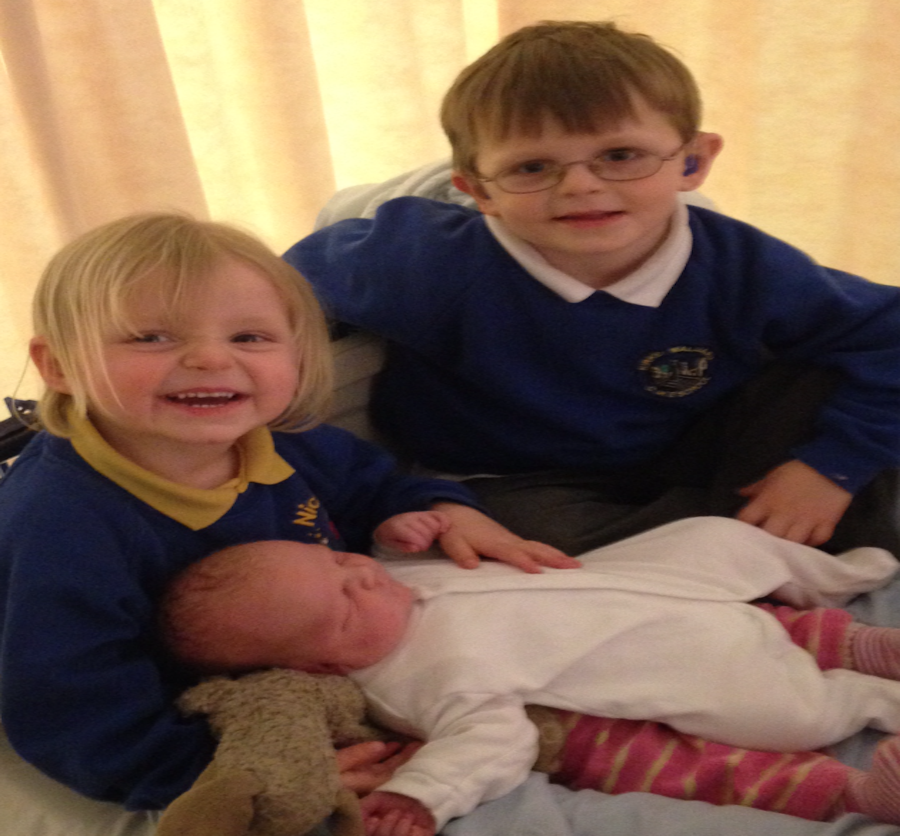- Study Says Most Parents Don’t Use Car Seats In Ride Share Vehicles Like Uber
- This 12-Year-Old Boy Is A Sophomore Aerospace Engineering Major!
- Fire Safety Experts Warn Of Hand Sanitizer Danger After A Mom and Kids Escape House Fire
- Recall Alert: Peaches May Be The Cause Of Salmonella Outbreak, 68 People Ill
- Summer Vacation In The Days Of COVID: Tips To Stay Safe
- How To Safely Grocery Shop During The Coronavirus Pandemic
- Michigan Teen With Vape-Related Illness Undergoes Double Lung Transplant
- Teen Kicks Off Anti-Vaping Campaign From Hospital Bed
- Teenager Receives Life Sentence For Strangling Sister To Death Over A Wi-Fi Password
- Toddler Falls To Death From 11th Deck of Cruise Ship
Father Whose Daughter Died From Sepsis Is Urging Parents To “Ask This Question”


A Father whose daughter died from blood poisoning when she was just three years old is encouraging other parents to ask the question: “Could it be sepsis?”
Peter Howarth , from Manchester, said that his daughter Pippa began feeling under the weather at the beginning of April 2014.
A few days later, she was rushed to hospital and diagnosed with pneumonia. At no point did the dad suspect that, within a matter of hours, she would die from sepsis.
“What people don’t know about sepsis is the speed and how quickly it changes a life,” Howarth, who is a dad-of-three, told HuffPost UK.
“Pippa went in at 7pm and she died by 4am. That’s how quickly it takes a life.” Sepsis, also known as blood poisoning, is a reaction to an infection in which the body attacks its own organs and tissues, according to the Sepsis Trust.
The reaction develops when the chemicals released into the bloodstream by the immune system to fight the infection cause inflammation throughout the body instead.
Howarth’s daughter fell ill shortly after his second son was born on 31 March 2014. He described Pippa as a “robust” three-year-old, who rarely seemed to get sick. At the beginning of April, she went down with what the family thought was a cold. She had a high temperature and was a bit “lethargic”.
“It was genuinely no more sinister than that,” said Howarth.
Howarth and Pippa’s mother gave her Calpol every few hours. She was unwell for a few days – with no vomiting or diarrhoea, but then one evening, Howarth’s now ex-wife was worried that her breathing wasn’t quite right.
The couple called the NHS helpline who sent round an ambulance. Paramedics gave Pippa an oxygen mask to help her breathe and decided to take her in for tests.
At the hospital, they found out she had fluid on her lungs and she was diagnosed with pneumonia and there was no mention of sepsis.
Pippa was put on antibiotics and Howarth stayed with her at the hospital overnight, while her mother went home to look after their newborn.
“I was there at 10pm and she was wired up to drips, but still demanding pink drinks and a story,” Howarth said. “She was bossing me around, she was perky.
“It got to 3am and I thought she wasn’t right. She was talking, but it was nonsense and stopped making sense. I got the nurse to come in.
“They checked on her and there was no mention of sepsis, then off they went.
“I sat with her half an hour after this point in the room, just holding her hand. I was holding her hand when she stopped breathing. That was it.
“I was hustled out, the crash teams came in. She died before my wife got there. After about 20 minutes I was allowed back in the room, and that’s when my life changed.”
Pippa was being treated for pneumonia, but she died from sepsis.
Sepsis – I didn’t hear that word until she had died,” Howarth said. “We didn’t get a chance to fight, she was gone before we could try. We didn’t have a chance, she didn’t have a chance. It was a flick of a switch and she was gone.”
Howarth now wants people to understand the speed at which sepsis acts, adding: “It happened so quick, people just don’t think about it.
“It ruins your life. Everybody blames themselves when a child dies but with this disease, you don’t have a chance unless you spot it early.
“You can’t always spot the symptoms. I don’t know if we ever could have stopped it, unless we said: ‘Could it be sepsis?’”
Howarth’s message to parents is exactly that: To ask medical experts if they are worried about their child: “Could it be sepsis?”
Despite Sepsis being a life-threatening illness, if caught early (before it has affected any vital organs) it is possible to treat sepsis with antibiotics. Most people who have it detected at an early stage are able to make a full recovery.
“It may not have changed the outcome with us,” Howarth said. “We might have been unlucky, but maybe – if someone had asked – just maybe, we’d still have her.
“If by doing any type of awareness raising I can help one person ask the question and save one life, that’s one family that doesn’t have to go through the hell we’ve had to go through.
“Sepsis kills quickly. It’s the speed it kills that people need to know about.”
“I’d love to say let’s do with sepsis what we did with ebola and try to fight it,” he said. “Depending on what you believe, it does affect every community.
“Surely someone somewhere has got to accept that there needs to be research done to tackle what treatment there could be, or even a pin prick test? This could help people work it out early.”
Sending a final message to parents, Howarth said: “It’s life-changing to have to cope with a loss of a child. It affects everything.
“Tell your child you love them every day and cuddle your children while you still can.”
- Spotting sepsis in children under five.
Source: NHS Choices.
Go straight to A&E or call 999 if your child has any of these symptoms:
- looks mottled, bluish or pale
- is very lethargic or difficult to wake
- feels abnormally cold to touch
- is breathing very fast
- has a rash that does not fade when you press it
- has a fit or convulsion.
If your child has any of the symptoms listed below, seek medical advice urgently from NHS 111.
Temperature:
- over 38C in babies under three months
- over 39C in babies aged three to six months
- any high temperature in a child who cannot be encouraged to show interest in anything
- below 36C – check three times in a 10-minute period.
Breathing:
- finding it much harder to breathe than normal – looks like hard work
- making “grunting” noises with every breath
- can’t say more than a few words at once (for older children who normally talk)
- breathing that obviously “pauses”.
Toilet/Nappies:
- not had a wee or wet nappy for 12 hours.
Eating And Drinking:
- new baby under one month old with no interest in feeding
- not drinking for more than eight hours (when awake)
- bile-stained (green), bloody or black vomit/sick.
Activity And Body:
- soft spot on a baby’s head is bulging
- eyes look “sunken”
- child cannot be encouraged to show interest in anything
- baby is floppy
- weak, “whining” or continuous crying in a younger child
- older child who’s confused
- not responding or very irritable
- stiff neck, especially when trying to look up and down.









0 comments